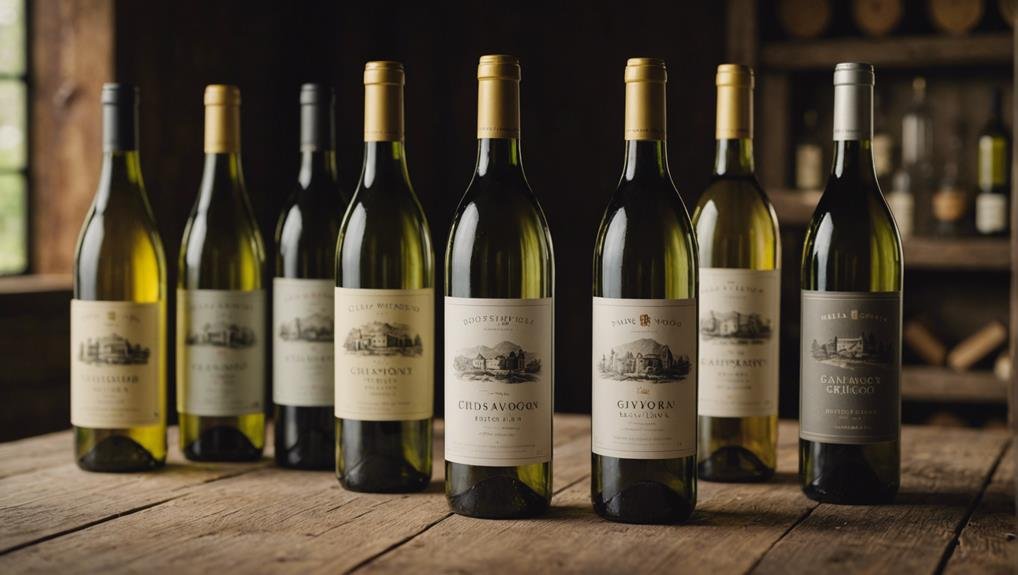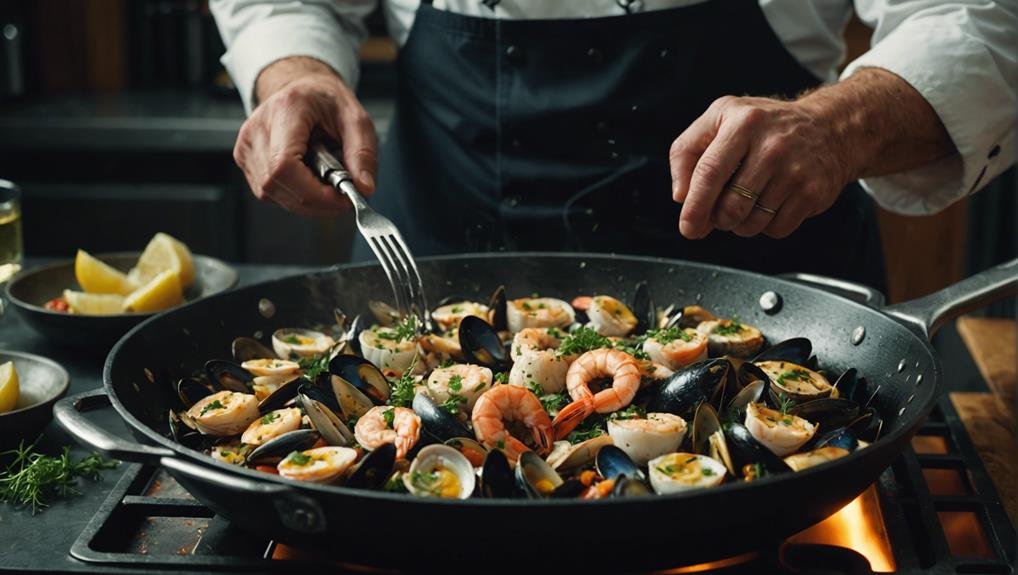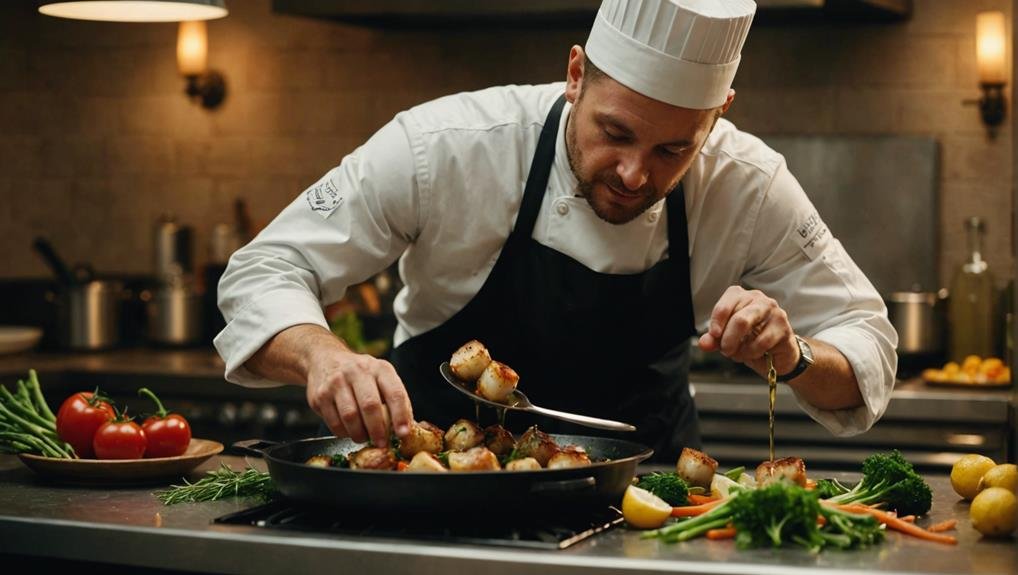When you cook with dry white wine, you open up a world of culinary possibilities that can take your dishes from ordinary to extraordinary.
Each varietal brings its own unique flavors that can enhance the taste of your food in remarkable ways. Whether you're looking to add a touch of sweetness to seafood or depth to your vegetable dishes, incorporating dry white wine into your cooking can truly make your creations stand out.
Stay tuned as we share expert tips and secrets to help you use dry white wine to elevate your dishes and impress your guests.
Selecting the Right Dry White Wine

When selecting a dry white wine for cooking, opt for a varietal that offers a delicious taste profile on its own. Look for dry white wines that are not labeled as cooking wines, as they provide a more complex flavor. These wines are typically not sweet, making them versatile for various dishes.
Consider options like Sauvignon Blanc, Pinot Grigio, or Chardonnay, as they can enhance a wide range of ingredients without dominating the dish. Keep in mind that recipes often call for about a cup of wine, so choose a varietal that you would enjoy sipping with your meal for the best culinary outcomes.
Pairing White Wine With White Meat
When cooking white meat dishes, consider pairing them with a rich, dry white wine like Chardonnay to enhance the flavors and achieve a perfect balance. Other excellent options include Viognier, Chenin Blanc, and Viura, which complement white meats beautifully.
Chardonnay works wonders in cream sauces, gravies, or with chicken, adding depth with its full-bodied nature. To balance the acidity in cream sauces, expertly reduce the wine before blending it with cream for a seamless fusion of flavors.
These wines truly bring out the best in white meat dishes, elevating the overall taste experience. Experiment with different varietals to discover the ideal match for your culinary creations, ensuring a delightful dining experience with every bite.
Enhancing Seafood With White Wine

When it comes to enhancing seafood flavors, incorporating white wine into your cooking can add a sophisticated depth that elevates the dining experience. Opt for crisp, dry white wines like Pinot Gris or Vinho Verde to pair with seafood like fish and shellfish.
Here's a simple guide to pairing white wine with seafood:
- Pinot Gris: Ideal with salmon, scallops, and shrimp.
- Vinho Verde: Perfect for cod, oysters, and mussels.
- Colombard: Pair with crab cakes and lobster.
- Verdicchio: Goes well with sole, clams, and squid.
- Picpoul de Pinet: Try it with trout, octopus, and prawns.
These white wines complement the delicate flavors of seafood, enhancing them without overpowering, creating a harmonious balance of tastes on the palate.
Elevating Vegetable Dishes With Wine
Enhancing vegetable dishes with the subtle flavors of wine can add a sophisticated touch and elevate the overall taste. Herbal dry white wines like Sauvignon Blanc, Grüner Veltliner, and Verdejo are great options for enhancing vegetable dishes.
For example, Sauvignon Blanc can bring fruity, herbal, and floral notes to vegetables like artichokes, tomatoes, garlic, and mushrooms. Using wine in cooking is simple; just pour some into the sauté pan for added complexity.
When incorporating wine into vegetable dishes, it's best to let the flavors blend by deglazing the pan after sautéing. This method helps create layers of flavor, resulting in a more nuanced and enjoyable dining experience.
Expert Tips for Cooking With Wine

When using dry white wine in your cooking, it's essential to follow expert advice to enhance the flavors of your dishes.
To elevate your culinary creations, start by reducing wine in cream sauces before adding cream to achieve a rich taste.
Deglaze the pan with wine after sautéing vegetables to infuse their essence into the dish.
When steaming or poaching shellfish, incorporating wine into the broth adds depth to the flavors.
For tenderizing meat, include wine in marinades to improve tenderness and taste.
Remember, longer cooking times help reduce the alcohol content, resulting in a well-balanced dish.
Frequently Asked Questions
Can I Substitute Dry White Wine With Another Type of Alcohol in a Recipe?
When considering using a different type of alcohol instead of dry white wine in a recipe, it's important to choose a substitute that closely matches the flavor profile. You can try options like vermouth, sake, or broth, but keep in mind that the taste may vary slightly depending on the choice you make.
How Can I Store Leftover Dry White Wine for Future Cooking?
To store any leftover dry white wine for future use in cooking, simply reseal the bottle tightly with the cork and place it in the refrigerator right away. If you plan to store it for an extended period, consider transferring the wine to a smaller container to reduce its exposure to air. Ensuring a tight seal will help preserve the wine's freshness over time.
Is It Necessary to Use Expensive Dry White Wine for Cooking?
When cooking, you don't need to use expensive dry white wine. Instead, opt for a budget-friendly option that tastes good. Affordable wines can provide the essential qualities of acidity and flavor needed for your dish. Choose a wine that you enjoy drinking as it will enhance the overall flavor of your meal.
Can I Use Non-Alcoholic Substitutes for Dry White Wine in Recipes?
When cooking, it's important to choose the right non-alcoholic substitutes for dry white wine in recipes. Keep in mind the recipe's flavors and textures; while grape juice or broth can stand in for wine, they might not offer the same complexity and depth that wine brings to the dish.
How Can I Adjust the Amount of Wine in a Recipe to Suit My Taste Preferences?
When adjusting the amount of wine in a recipe to match personal taste preferences, it's best to do so gradually. Increase or decrease the wine little by little and taste as you go along to achieve the desired flavor balance. Take into consideration the other ingredients in the dish and the intensity of the wine to ensure a harmonious blend of flavors.
Conclusion
When it comes to cooking with dry white wine, choosing the right type can truly enhance the flavors of your dishes. Whether you're adding a splash of rich Chardonnay to white meat or pairing seafood with a crisp Pinot Gris, the options are endless. Incorporating wine into vegetable recipes can bring a depth of flavor and a balance that will elevate your meals.
Remember to simmer wine in sauces, use it to deglaze pans for added essence, and don't be afraid to experiment with different varieties for a truly delightful culinary experience. Here's to mastering the art of cooking with dry white wine!